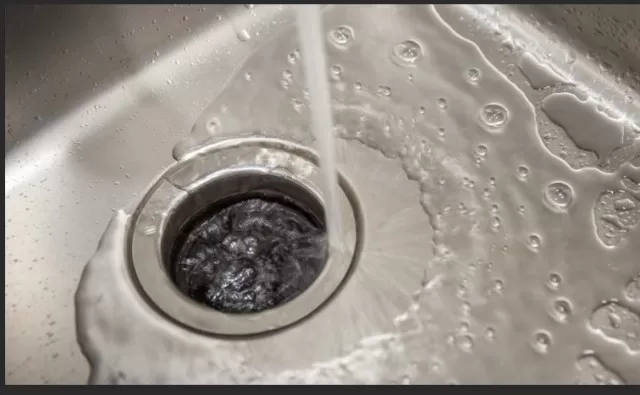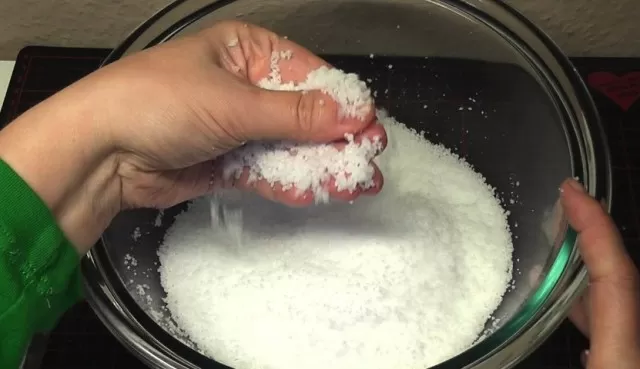Appliance-Damaging Habits: Break These Now.In the intricate choreography of daily life, your appliances stand as faithful companions, weaving convenience and efficiency into each moment. Yet, their longevity is not a mere matter of fate—it’s shaped by the habits you nurture today. As you embark on a quest to extend the lifespan of these essential household workhorses, a voyage of habit transformation awaits.
Uncover the power of informed choices and bid adieu to these detrimental behaviors, ensuring that your appliances endure and serve you well into the future.As you embark on this transformative journey, remember that the choices you make today ripple into the future, determining the longevity of your appliances. By adopting mindful practices and nurturing your appliances with care, you forge a path towards a future where these invaluable companions remain steadfast, reliable, and ready to serve. Embrace the power of positive habits, and in doing so, you sculpt a narrative of durability, efficiency, and responsible stewardship that spans across generations.
Optimal Practices for Maintaining Your Garbage Disposal: Embracing Cold Water Efficiency

Unveiling a Surprising Culinary Insight: Why Cold Water Trumps Hot Water for Your Garbage Disposal’s Well-being.
In the realm of kitchen wisdom, a peculiar but essential nugget of advice stands out: when it comes to clearing away culinary remnants through your sink’s trusty garbage disposal, the secret lies in the chill.
The prevailing assumption might tempt you to employ hot water for the task, yet a culinary sleight of hand suggests otherwise. By adopting the technique of utilizing cold water while engaging your garbage disposal to pulverize leftover edibles, you’re ensuring a longer lifespan and optimal performance for this humble kitchen companion.
Diving deeper into the science of it all, the rationale behind this unconventional approach becomes remarkably clear.
The nefarious duo of grease and fat, often remnants of delectable meals, possess a vexing tendency to liquefy under the allure of hot water’s warmth. Seemingly innocent as this transformation might be, the consequences are far from benign.
Picture, if you will, these once-solid fats taking on a liquid form and stealthily making their way into the labyrinthine recesses of your disposal’s drainage system. Here, they cool, congeal, and solidify once more, initiating a slow but inexorable clog that, over time, could spell disaster for your trusty kitchen workhorse.
In contrast, the judicious application of cold water presents a strategic advantage that cannot be overstated.
As food particles are broken down within the disposal’s grinding chamber, the frigid embrace of cold water aids in solidifying and subsequently shattering any fats or grease that might accompany the feast. This shattering effect prevents the formation of tenacious clogs, granting your disposal the freedom to perform its culinary magic without a hitch.
Furthermore, the benefits of this approach extend beyond the realm of clog prevention.
By sparing your disposal the onslaught of heat-induced mechanical strain, you’re effectively extending its operational longevity. This translates to fewer maintenance headaches and a decreased likelihood of premature replacement—no small victory for your kitchen’s economic and ecological well-being.
In conclusion, the kitchen’s hidden dance with science imparts an invaluable lesson: when it’s time to bid adieu to your culinary creations through the conduit of your garbage disposal, let cold water be your steadfast ally.
This simple yet counterintuitive practice stands as a beacon of efficiency, ensuring a harmonious coexistence between your kitchen’s remnants and the mechanical marvel that dutifully whirs beneath your sink’s surface.
Preserving Your Laundry and Savings: The Perils of Neglecting Pocket Change
A Lesson in Laundry Care: The Importance of Empty Pockets Before Washing.
Embarking on the journey to launder your clothes holds a hidden caveat that, if overlooked, could lead to an unwelcome twist in your budget.
As you gather your garments for a cleansing whirl in the washing machine, an often-dismissed ritual takes center stage: the meticulous examination of pockets. Beyond the realm of loose change and forgotten bills lies a tale of caution, where neglecting this simple task could trigger a costly cascade of events.
Picture the scene: your favorite pair of jeans, loaded with remnants of your daily adventures, ready to embrace the swirling waters of cleanliness.
Yet, lurking within their depths, concealed within the folds of fabric, rests a seemingly insignificant culprit—an abandoned coin, innocently left to its own devices. Unbeknownst to you, this small metallic wanderer carries the potential to wreak havoc upon your laundry routine.
As the washing machine’s drum begins its rhythmic dance, the unsuspecting coin becomes a rogue performer, colliding with the drum’s surface.
In this seemingly innocuous encounter, the stage is set for disaster. The once-harmless coin, now set into motion by the machine’s mechanical choreography, transforms into a perilous projectile.
The result? A cacophony of noise and, worse yet, the potential for irreversible damage to your washing machine’s delicate inner workings.
But the drama doesn’t end there.
As the coin ricochets within the drum’s confines, it might uncover a new destiny—one that leads it into the labyrinthine maze of nooks and crannies. Here, nestled among the machine’s intricate mechanisms, it can initiate a precarious game of hide-and-seek.
The stakes are high: a potential jam that not only disrupts the machine’s performance but also beckons forth an expensive repair, draining your wallet in a manner you never anticipated.
Preventing this laundry room tragedy is surprisingly simple, yet its significance cannot be overstated.
By taking a moment to diligently inspect every pocket before surrendering your attire to the washing machine’s embrace, you’re fortifying your laundry routine against the unexpected perils of pocket change. Your attentive vigilance serves as a shield, guarding both your hard-earned money and your trusted washing machine from an untimely demise.
In conclusion, as you embark upon the ritual of laundering, consider this tale of caution—a reminder that the seemingly mundane act of pocket-checking is a silent sentinel against the turbulent currents of unexpected expenses.
By heeding this lesson, you not only preserve your laundry’s integrity but also safeguard your finances from an avoidable plunge. The choice is yours: a moment of diligence now or the repercussions of neglect later.
Balancing Act: The Art of Filling Your Freezer

Striking the Perfect Balance: Maximizing Efficiency While Avoiding Freezer Overload.
In the world of home appliances, a curious paradox unfolds within the heart of your freezer—a delicate equilibrium between functionality and excess.
While the adage “more is merrier” often holds true, there exists a hidden caveat that bears consideration: the perils of overfilling. While a brimming freezer is indeed a symbol of efficient storage, it’s crucial to recognize that there exists a point where abundance can become a detriment.
A cautionary tale of air, cold currents, and the unseen mechanics of your refrigerator’s vital components awaits, illuminating the tightrope walk between efficiency and excess.
The concept appears deceptively simple: a full freezer operates more efficiently than an empty one.
In this harmonious state, the interplay of frozen items actually aids in maintaining the desired low temperature, reducing the workload on your appliance. Yet, like any artful performance, moderation holds the key.
Just as a symphony’s crescendo is carefully orchestrated to elicit awe without overwhelming the senses, so too must your freezer’s contents be managed with finesse.
Imagine, if you will, a freezer brimming with the remnants of culinary endeavors and frozen delights.
A visual feast for sure, but beneath the surface lies a potential conundrum. The very items that contribute to the freezer’s efficient operation can, paradoxically, obstruct its flow of vital components: air and cold currents.
Air vents, often overlooked but indispensable conduits, become the unsung heroes of temperature regulation. When obstructed by an excess of frozen goods, these vents lose their ability to facilitate the circulation of cold air—a critical choreography that keeps your frozen items at their optimal chill.
However, the repercussions extend beyond mere temperature imbalances.
As air struggles to navigate its labyrinthine path, your refrigerator’s condenser—the unsung workhorse responsible for expelling heat—can be pushed to its limits. The delicate balance that once characterized your appliance’s inner workings teeters on the precipice.
The result? An ominous burnout looms on the horizon, a mechanical meltdown that could render your trusted refrigerator a relic of its former self.
Striking the perfect balance between utility and excess emerges as the artful solution.
Embracing a full freezer remains a wise choice, harnessing the collective chill to preserve your edibles while promoting energy efficiency. Yet, just as a painter knows precisely when to lay down their brush, so must you exercise restraint in your freezer-filling endeavors.
A dance of moderation ensures that air circulates unimpeded, that cold currents weave their magic, and that your refrigerator’s condenser can hum along without strain.
In summation, the story of freezer overfilling imparts a nuanced lesson—a reminder that balance reigns supreme in the realm of domestic efficiency.
As you navigate the symphony of storage within your appliance’s frozen chamber, let moderation and thoughtful consideration be your guiding notes. In doing so, you craft an ode to harmonious operation, where the coalescence of fullness and function paints a masterpiece of both culinary preservation and mechanical longevity.
A Delicate Balance: The Pitfalls of Overloading Your Washing Machine
Navigating the Laundry Load: The Art of Responsible Washer Filling.
In the choreography of household tasks, a seemingly innocuous act—loading the washing machine—holds the potential to set off a chain reaction of consequences.
As laundry accumulates and the desire for efficiency beckons, a siren song whispers the allure of stuffing the machine to its limits. Yet, within this tempting proposition, a lesson in prudence emerges, reminding us that even the simplest actions bear weighty repercussions.
Behold the cautionary tale of overloading, a journey into the delicate interplay of mechanics and necessity, where a fine line separates convenience from chaos.
The temptation is familiar: a mountain of garments, pleading for respite within the confines of your trusty washing machine.
The impulse to maximize each cycle’s potential is palpable, driven by the desire to conquer the laundry pile in a single swoop. However, beneath this quest for expedience lies an unsuspecting foe: the specter of overloading.
As you yield to the allure of cramming every last fabric fiber, a series of unfortunate events is set into motion, threatening the harmony of your washing machine’s inner workings.
Consider, for a moment, the mechanics at play within the heart of your appliance.
The bearings, unassuming yet essential, bear the weight of your laundry’s dreams. In the world of physics, even the mightiest structures have limits, and so do these bearings.
The moment you push your machine beyond its capacity, these steadfast companions begin to falter, succumbing to the undue stress of an excessive load. The result? A symphony of internal strains that could culminate in an unsettling discord—a repair call that beckons a technician to mend the damage.
But the repercussions don’t end there.
As the overloaded drum spins into action, an unintended consequence emerges: misalignment. The delicate balance that once characterized your washing machine’s rhythmic choreography is disrupted, throwing the drum’s harmonious orbit into chaos.
With each revolution, a subtle but inexorable deviation takes root, amplifying over time to a crescendo of mechanical disarray. In the wake of this misalignment, your appliance’s performance wanes, and the looming specter of repair draws ever nearer.
The lesson is clear: moderation and consideration are the guiding stars in the laundry constellation.
While the urge to conquer the laundry mountain in one fell swoop is compelling, it’s imperative to recognize the fragility of your washing machine’s inner workings. The artful balance between necessity and restraint ensures a future unmarred by untimely repair calls and mechanical misfortune.
In summation, the tale of overloading serves as a poignant reminder—a testament to the delicate balance that underpins the efficient functioning of our household companions.
As you navigate the seas of laundry, let the lesson of moderation be your compass, guiding you towards a harmonious coexistence with your trusted washing machine. By adhering to this wisdom, you not only preserve the longevity of your appliance but also embark upon a journey of responsible domestic stewardship—a journey where measured actions yield a symphony of efficiency, bearing testament to the power of balance.
Tending to Culinary Mishaps: The Importance of Prompt Oven Spill Cleanup

Guarding Your Oven’s Longevity: The Unsung Significance of Timely Spill Management.
In the bustling theater of culinary creation, spills inevitably take center stage as supporting characters in the grand production of cooking.
As the aromas dance and flavors meld, these occasional mishaps are the unassuming by-products of your gastronomic endeavors. Yet, within this culinary narrative lies a lesson of caution—a tale that underscores the delicate balance between creativity and appliance care.
Enter the saga of oven spills, a subtle reminder that the aftermath of kitchen artistry should not be left unattended. The stakes are high, and the curtains unveil the untold story of heating coils, silicone sentinels, and the timeless quest for culinary harmony.
Consider, if you will, the aftermath of a sumptuous feast—the remnants of a culinary adventure, lovingly prepared and consumed.
Amid the din of satisfied palates, one detail might slip past unnoticed: a spill, accidental and seemingly benign, nestled within the caverns of your oven’s interior. The natural inclination is to defer its resolution, to relegate the cleanup to a later moment.
However, as our cautionary tale will reveal, this seemingly innocuous delay holds the potential for far-reaching consequences.
Delve into the mechanics of your oven, and a precise choreography unfolds.
At its heart, the heating coils stand as stalwart sentinels, orchestrating the transformation of raw ingredients into delectable creations. Yet, the harmony of this symphony is fragile, susceptible to the insidious influence of spilled substances.
As spills linger and sizzle, they have the power to infiltrate the domain of these coils, gradually eroding their integrity and efficiency. Left unchecked, this slow and silent degradation can lead to an unwelcome crescendo—an expensive repair call that disrupts the rhythm of your culinary pursuits.
Enter the pro tip, a beacon of practicality amid the culinary landscape.
A silicone oven liner, thoughtfully placed on the bottom rack, acts as a sentinel against the encroachment of spills. As ingredients transform and accidents occur, this unassuming barrier catches and cradles the rogue remnants, preventing their descent into the depths of your oven’s delicate machinery.
The result is twofold: a shield against damage to your heating coils and a simplified cleaning process that spares you the laborious task of scouring away stubborn residues.
In conclusion, the tale of oven spills imparts a lesson of mindfulness and foresight—a reminder that even in the pursuit of culinary excellence, responsibility to our appliances remains paramount.
As you channel your culinary creativity, let the wisdom of timely spill management be your guiding star. By embracing the practice of immediate cleanup and harnessing the protective prowess of a silicone guardian, you embark on a journey of culinary artistry that harmonizes seamlessly with appliance longevity.
The stage is set, the scene complete—your kitchen’s narrative, a symphony of flavor and care, poised for its next captivating act.
*The information is for reference only.